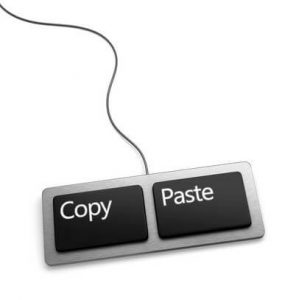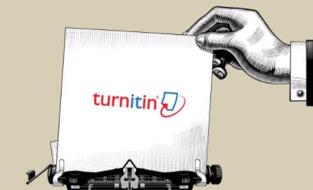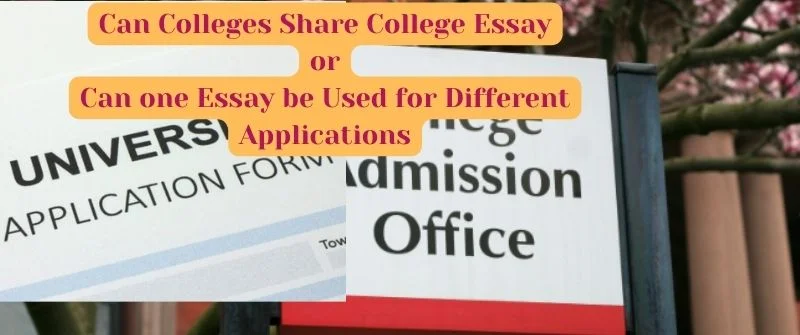Does Turnitin check Previously submitted Work or Old Papers

Just like any other plagiarism-detecting system, Turnitin has a database from which it scans uploaded papers for similarity.
The database in Turnitin contains all scanned files. In this post, we explore how Turnitin checks old papers, especially those that had been previously submitted.
However, it is up to the instructor or the student to decide whether or not to allow Turnitin to store their papers in the database. It should be noted that by default, all papers scanned by Turnitin are stored in its database.
To avoid such problems, you can hire experts to write your papers and earn your grade easily. However, if you insist on submitting previous papers, read on how to get away with it.
Does Turnitin check previously submitted work?
It is a policy for Turnitin to keep your paper in its archives. Therefore, you can ask for your paper not to be kept by Turnitin.
Turnitin will remove your paper from its database within two weeks after requesting your instructor to notify Turnitin of your decision.
Turnitin checks previously submitted work and detects it as plagiarism, whether it was submitted by you or someone else. This is because previously submitted papers and essays are stored on the Turnitin database. This means that if the work is re-used, Turnitin will flag it for similarity.

When your paper is no longer on the Turnitin database you can reuse it without plagiarism being detected.
Learners should note in this regard that it is unethical to rewrite your paper.
However, paraphrasing is one of the 5 ways of cheating Turnitin by reducing its similarity.
Self-plagiarism is still regarded as plagiarism in all academic standards and one is liable for punishment if caught.
This is severe if the percentage Turnitin similarity is too much that your instructor feels you copied everything.
Even if the submitted work did not belong to you, if you submit it again, Turnitin will flag it as plagiarised unless the original writer requested its removal from the database.
In addition, it should be noted that Using your previously submitted work in another context is referred to as self-plagiarism.
Therefore, you should consider paraphrasing, changing the topic, and supporting new ideas with the previous easy rather than replacing them to beat Turnitin plagiarism detection.
Can Turnitin detect old papers?
Turnitin can check old essays and files that are posted in any database that partners with it, meaning one that can be accessed or on the Internet. What this means is that any paper that had been previously submitted by students for similarity report feedback can be accessed by Turnitin at any moment.
Turnitin can detect old papers that have been previously submitted to it because it keeps a record for future reference. Again, Turnitin can detect papers that are available in web sources and other databases that are affiliated to Turnitin.
In this case, you should note that old papers include those that are submitted in their entirety or the content that has been copied from them and pasted into new papers.
If you have to use old or previously submitted papers, you seriously need to paraphrase the content. As advised, Turnitin cannot detect good paraphrasing, unless if done badly. You should also cite the sources of the content well.
Though this is the case, Turnitin is only capable of checking old papers that have been submitted through it
Since there are several other tools to check for plagiarism such as SafeAssign, institutions or individual students may decide to submit their papers through them instead of Turnitin.
In such cases, Turnitin will not check old papers that have been submitted through those tools. It will only check its old papers.
If you have previously submitted your papers through Turnitin, you can check them through Turnitin’s Paper Lookup tool usuing your name and paper ID.
Therefore, if you are tempted to resubmit an old paper, think twice because Turnitin will detect it as a previously submitted work.
How to copy old papers and get away with it
Since it is now clear that Turnitin checks old papers, you may be wondering how you can copy those papers well.
This is an understandable question because you may have personally written a paper in the past and your instructor has given you an assignment requiring you to write a similar paper.
What you should note is that as long as you have submitted a paper through Turnitin, it will store it and use it as part of its comparative texts.
Turnitin is created in such a way that it detects any recycled content. This can be very frustrating since the past paper still belongs to you.

To copy old papers well, you should paraphrase, use quotes, or rewrite the whole paper.
Paraphrasing is an effective method of copying an old paper because even when the content is similar, the wording and delivery are different.
This confuses Turnitin and in the process takes the paraphrased paper as a fresh or new paper containing different ideas and texts.
Using quotes (“…”) lets you get away with copy-pasted text. However, be sure to include in-text citations as part of the reference. Finally, you can decide to rewrite the old paper. This is easier because even though the content is not yours, you will have written a new paper.
How to Safely use Old Papers in College
How to use old papers and how to copy them may gravitate toward a similar thing or idea. However, the difference is intent. What do you intend to do with the old papers that can be easily accessed by Turnitin? Well, there are several uses of old papers.
The first use can be to completely use their content for your paper. This is where you can ingeniously copy the old papers’ content and create a new paper.
This especially applies to old papers that are similar, in terms of the instructions and the requirements, to your papers. You can decide to paraphrase the old paper, quote the old paper, or rewrite the whole paper.
Secondly, you can use the old papers to support your arguments within your paper. This applies to papers that build or act as a foundation for your new paper or peer-reviewed papers that act as sources for your arguments.
If you have previously submitted a paper and wish to use it as a foundation for your new paper, you can cite yourself correctly and appropriately using an acceptable format like APA, MLA, Chicago, or Harvard.
Other old peer-reviewed papers may contain valuable information that can be used in your paper. All that effort is worth it because Turnitin checks previously submitted work and old papers alike.
While using old papers, however, make sure that you do not resubmit them as your own, copy their content in entirety, copy their content without proper citation, or use part of them. This is because Turnitin will detect and flag it.
Why Turnitin Stores Old Papers
Turnitin stores old papers for the same reason as universities. Turnitin does so to mitigate the chances that students resubmit other students’ papers as their own.

As we have noted above, tests and exams that are administered within a particular course or discipline should be similar to maintain consistency.
Students should learn the same content and have similar ideas concerning disciplinary concepts so that they can conform to particular needs within the job market.
Therefore, the chances of instructors administering similar tests or exams as semesters or years go by are great.
If the institutions have a license to use Turnitin’s services, students will be submitting their papers through them.
Since Turnitin compares the overlapping texts of the submitted papers with stored old papers, papers that have been recycled, copied, or plagiarized will be detected. Any submitted paper that has any similarity with old papers will be flagged and considered plagiarized.
This is especially important for institutions of higher learning that do not store previously submitted papers physically or virtually. Such institutions need to use Turnitin’s services to mitigate the chances that allow students to use old papers from other students.
Why do Universities keep Old Papers?
Universities need to keep old papers, especially in today’s world where students are capable of accessing other students’ papers and using them as their own. For example in any university, there are hundreds and even thousands of students who enroll in a particular course or discipline in a year.
If the whole course takes 3 years to complete, there will be first, second, and third-year students within the course. For consistency purposes, the administered exams and tests will be similar for all students.
What this means is that second-year students may receive a test or an exam that is similar to what third-year students had been previously given.
There is a chance that some second-year students will be tempted to submit old papers from third-year students. To avoid this, universities keep old papers to compare them with submitted papers.
Is it Legal for Turnitin to Store Old Papers?
Yes. It is legal for Turnitin to store old papers. Turnitin was developed by iParadigms LLC for educational purposes in 1997. Since it was developed in the United States, it had to abide by the laws of the land.
According to Turnitin’s misconception blog, there was a unanimous affirmation by the United States Court of Appeals that its services fall into the fair use exception.
What this means is that Turnitin does not infringe any copyrights from students, institutions, or any other client users.
This is because it not only offers the uttermost privacy but also gives its users the option to let Turnitin store their papers or discard their papers once they have submitted the papers through it.
By agreeing to use Turnitin’s services, you will have accepted their terms and conditions. However, Turnitin prioritizes user privacy.
Exposing students’ papers to other users, parties or authorities is a crime. It is regarded as an illegal distribution or sale of unauthorized intellectual property.
Through Turnitin’s privacy, all papers are secure, meaning that it abides by the law. Giving users an option to donate papers to Turnitin reduces its liability for any papers that have been jeopardized.
This is because users are willingly donating their papers. Though this is the case, old papers are protected as part of their lawful commitment.




